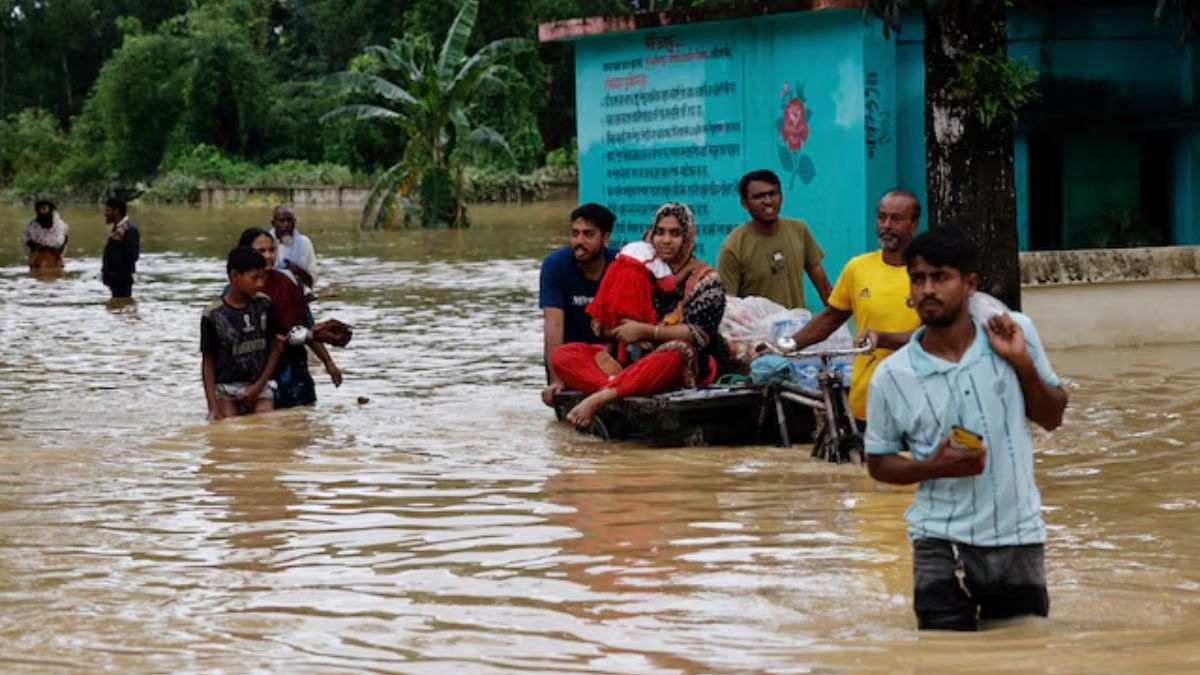Devastating floods in northern Bangladesh have claimed at least five lives and left over 100,000 people stranded, according to officials. The floods, triggered by heavy rains and upstream torrents, continue to wreak havoc in the region.
In Sherpur, one of the hardest-hit districts, water levels of major rivers have surged, submerging new areas and displacing thousands of families. Local authorities fear widespread damage to agriculture, particularly rice fields and farmlands.
Many homes and roads are underwater, cutting off villages and leaving residents in urgent need of rescue.
”I have never seen such flooding in my life,” said Abu Taher, a resident of the district.
Army personnel, using boats and helicopters, have joined rescue efforts, delivering emergency supplies and evacuating those trapped by the floods.
Bridges have collapsed, and roads have been submerged, making it difficult for local authorities to reach affected areas.
”Our priority is to evacuate people to safe shelters and provide them with essential supplies,” said Sherpur district administrator Torofdar Mahmudur Rahman.
He said another decomposed body, suspected to have floated from India, had been found.
The low-lying nation of 170 million has experienced multiple floods this year, underscoring its vulnerability to climate change. A 2015 World Bank Institute analysis estimated that 3.5 million people in Bangladesh are at risk of annual river flooding, a risk scientists say is worsening due to global climate change.
Impact Shorts
More ShortsAs water levels continue to rise, concerns grow about the long-term impact on the region’s agriculture, particularly rice crops. If the floodwaters do not recede soon, the economic toll on farmers could be severe.
Adding to the worries, the weather office has predicted more rain in the coming days, raising fears of further inundation.
The United Nations and its partners have launched a $134 million humanitarian appeal to provide urgent relief and support to communities affected by ongoing floods and cyclones in Bangladesh.
Last month, rumors spread online in Bangladesh that the flooding was caused by India opening the Dumbur dam in Tripura, causing a number of anti-India protests. India’s External Affairs Ministry denied the connection, pointing out that the dam is far from the border and that heavy rains had caused major flooding over a wide area in both countries.
With inputs from agencies.
)